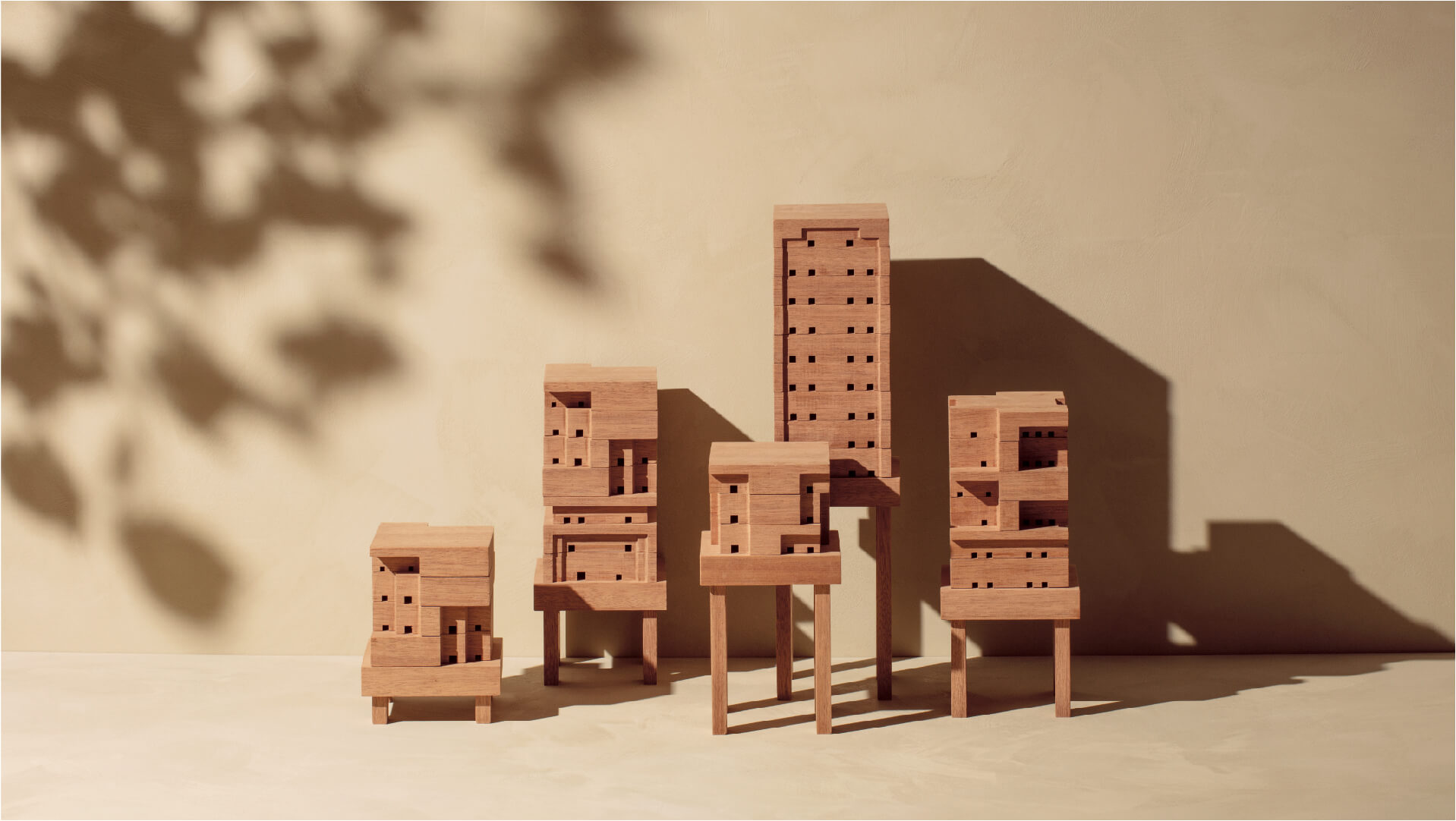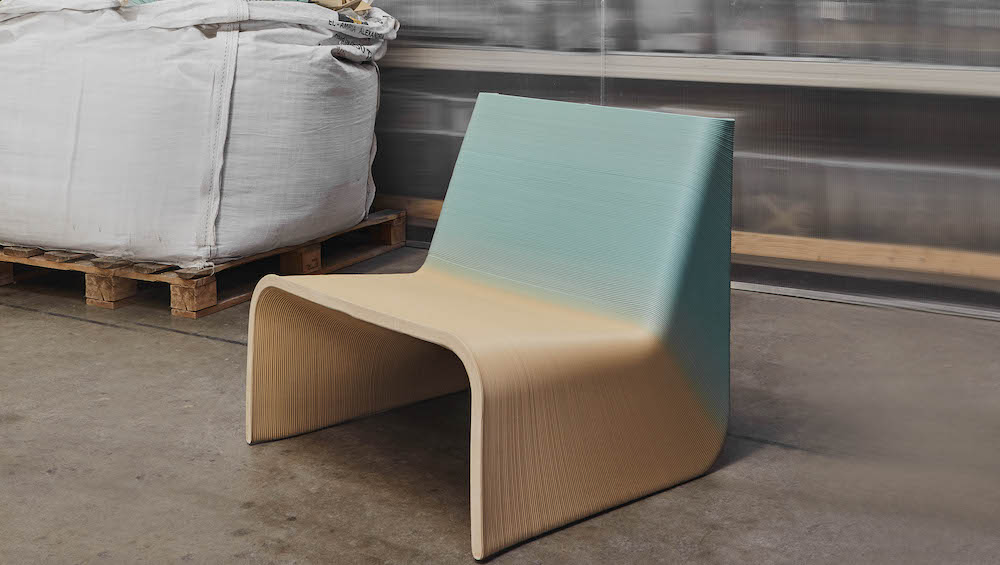Open-source beehive design generator by IKEA’s SPACE10: Bee Home

Bee Home, a free beehive generator created by SPACE10 in conjunction with Tanita Klein and Bakken & Bæck to enable people across the planet to help solitary bees find a home.
Bee Home is an open-source design that is free to use and allows for flexibility in materials, sizing and placement. It creates a pretty and long-lasting beehive inspired by human architecture that is easy to customize and assemble anywhere.
Solitary bees are vital for flowers, trees, animals and people. A third of what we eat depends on these buzzing insects and other pollinators but due to human impact, bees face extinction-hazard. Pesticides, chemicals and monoculture in farming have also caused wildflower meadows to rapidly vanish across the planet. That’s why SPACE10 wants to make it easy for anyone everywhere to design a beautiful home for these vital species.
Why Bee Home? To nurture bee colonies and tighten the relationship between humans and nature
Bee Home can be realized easily and locally after defining the design through the online tool offered on the website. The downloadable file contains instructions for construction, materials, assembly, maintenance and ideal placing. SPACE10 worked together with Tanita Klein and Bakken & Bæck to develop it.
The minds behind Bee Home – SPACE10
SPACE10 is a research and design lab on a mission to enable a better everyday life for people led by a planet-conscious approach. They research and design innovative solutions to some of the major societal changes expected to affect us in the years to come. Prioritizing a collaborative approach and striving to surround themselves with smart people, they manage to work with an ever-growing network of forward-thinking specialists and creatives from around the world to share their research and ideas publicly. They also regularly host exhibitions, talks, dinners, and screenings to engage their public.
SPACE10 is proudly supported by IKEA, working as a semi-independent research & design lab providing new perspectives to the Swedish furniture brand to live up to its original promise of creating a better everyday life for people.
For the Bee Home project, they also partnered with Tanita Klein, an interior and product designer from Germany, and Bakken & Bæck, a technology-driven design studio that builds digital solutions for ambitious companies.
If you want to see more wooden architecture, don’t miss NEON’s “Shiver House” is re-imagined in wood to celebrate its five year anniversary

Materials and Techniques – Flexibility in materials and modular open-source design
The open-source design allows for flexibility in materials. The choice of hardwood is left to the people around the world that want to build a Bee Home, allowing for different types of locally sourced wood. At the same time, creating a design that could be fabricated on a CNC milling machine, that allows you to create high-quality assembly parts and is found in most maker-spaces in the world, makes the project affordable and approachable by anyone.
Since CNC machines have restrictions in relation to the thickness of the materials, they had to think in terms of layers for the final design. This made really good sense in terms of creating a modular open-source design that was easy to customize. The assembly does not require glue, screws, or nails and is simple, easy and robust. It has a functional key element, the spine, that locks the structure together without compromising aesthetics. There is a wedge that locks and unlocks the whole structure with the tap of a hammer, creating the perfect symbiosis between the perfect mansion and joinery.

Style and Aesthetics – Multi-storey Architectural Design and Wooden Minimalism
When creating the dream home for bees, the team wanted to make it easy enough for anyone to design one with an aesthetically pleasing result, to become a sculpture for the garden or balcony.
Making it look like a small human home for bees transformed it into a small-scale multi-story architectural structure and a huge mansion for bees. The design itself is streamlined and minimalistic, with no superfluous additions to the main structure. Everything has a purpose and is very practical for maintenance. The grain and color of the wooden structure depend a lot on the material chosen.
There are also three parameters that can be adjusted when designing the Bee Home: the height, the number of stories and the position of the Bee Home. There are three positions available for the Bee Home, mounted on a wall, standing on a rooftop or grounded in soil.

Design your beehive online and join the community
The Bee Home website features three core parts: Design, Learn and Explore. Each of these opens as a window, focusing people’s attention on one thing at the time, to live and engage with the Bee Home project entirely.
Creating a connection between the physical artifact and the digital experience was key: so once you have designed your Bee Home, you can fabricate it, upload it to the community map and add photos of your Bee Home. By doing so, the projects close the loop between the physical and digital worlds — inspiring more and more people to make a home for bees.

Design memento – Joining forces in creation for the good of the environment
Bee Home explores how an open-source approach can improve the way we design, fabricate and distribute physical products. The project also reinforces the belief that collaboration to achieve the best possible outcome is key in the process of creation. Working with a fabrication specialist, who has knowledge about materials, and a technology-driven design studio, who are experts in parametric design and digital design tools, made the process really efficient. They managed to share their vision and combine their broad knowledge to create a really strong output.
Bee Home is an open invitation for everyone to give bees the home they deserve and an important contribution to preserve our planet’s biodiversity.

The writer’s comment – Paving the way to restore the relationship between humans and nature
Bees are an essential part of our global ecosystem. A single solitary bee could provide as much pollination as 120 honeybees. Every female solitary bee is a queen that could get 20 to 30 offspring, giving life to hundreds of solitary bees ready to ensure the survival of our nature. Solitary bees are friendly – they don’t produce honey and therefore have nothing to protect. They only sting if trod on and are safe to keep around kids and pets.
Without bees as pollinators, maintaining our biodiversity and keeping planet Earth healthy would be impossible. Humans have jeopardized this equilibrium by building cities and expanded industrial farming, leaving bees with no natural habitat. Bee Home is key in providing a natural solution for solitary bees and helping our world to remain in good health. Literally anyone anywhere can now play an active role since the open-source design is free to use and can adapt to the available materials anywhere. I believe that projects like this are the future if we want to help our planet heal itself and restore the relationship between humans and nature. I am planning my Bee Home already!
If you want to see more sustainable design product, check ‘Just Vertical Interview







